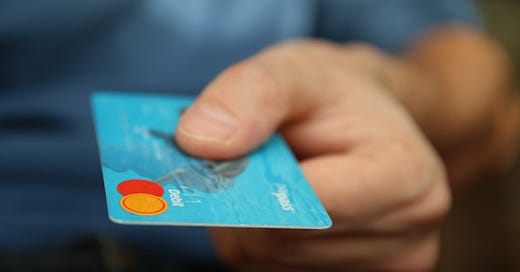How is security taken care of for your cards?
Frauds during card transactions have increased manifold since these have become a major part of the payments cycle. We are essentially trusting them with all of our money when we use and travel with these cards. So I think it is important to know how are we protected against malpractices by these plastic cards built by some companies we have no link to.
But first, what are the different types of cards? There are majorly two types: debit cards and credit cards. When you use debit cards, you’re using funds that are already present in your bank account to pay for things. When you use credit cards, you’re using the issuing company’s funds as “credit” to pay for things. And you have to pay them back in a pre-specified time or you have to pay high rates of interest.
Coming to the topic of security, companies have tried to leave no stone unturned. Since this can become a big source of liability for them if not taken care of properly, card companies put in a lot of effort to ensure security.
PIN number: You need to enter your PIN number for any POS transactions at shops. And this number is not written anywhere on the card, which adds another layer of security since that number is in your head and of those you tell it to. Just by the way, you shouldn’t do that, maybe not even to family members.
Card Verification Value or CVV: Typically printed at the back of your card, the CVV is a 3-digit (sometimes 4-digit) number that is to be used for purchases in online stores. It adds as an additional check to see if you have the card and are not just using the card number to make purchases using someone else’s card.
Card Expiry Date: This information is also asked during online purchases to add to the CVV. But with both the CVV and expiry date there is a major problem, everybody who holds your card at any point can see them. To fight back on this problem, the next thing is required.
2-factor authentication: In other words, OTPs. The first factor in this process is the information written on your card and the second is a password that you get only at the time of a specific purchase and which is useless afterwards.
You can also prevent transactions on your card by setting all card limits to 0 or very low levels when you don’t have to use them. This seems like a step further and a hassle but at least your money would be yours for that amount of time for sure.
Apart from theft/pickpocketing, you can lose your card information to fraudsters through something called skimming, in which the information on the card is taken when you swipe through an illegitimate machine. So pay attention and don’t pay using cards to shady/untrustworthy merchants. You can also be asked to give card information over by phone by scammers posing to be officers of a bank or other institutions, and again, you should never tell any of the information on your cards to anybody.
Well, stay safe, and thanks for reading. And if you enjoyed this article, you can read more from me here. And do let me know if you want a specific topic covered. Subscribe for free to receive more posts like this every day!



